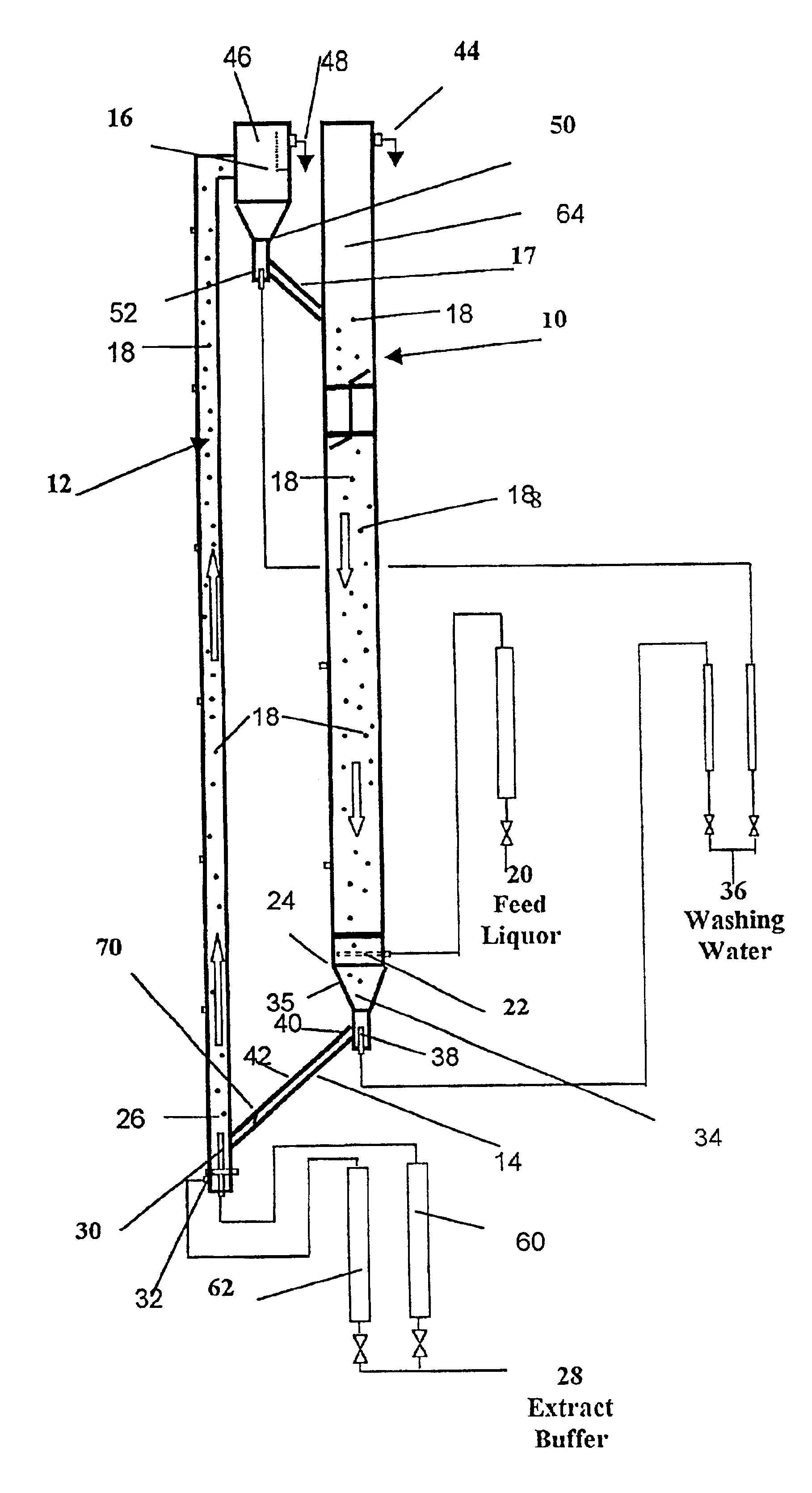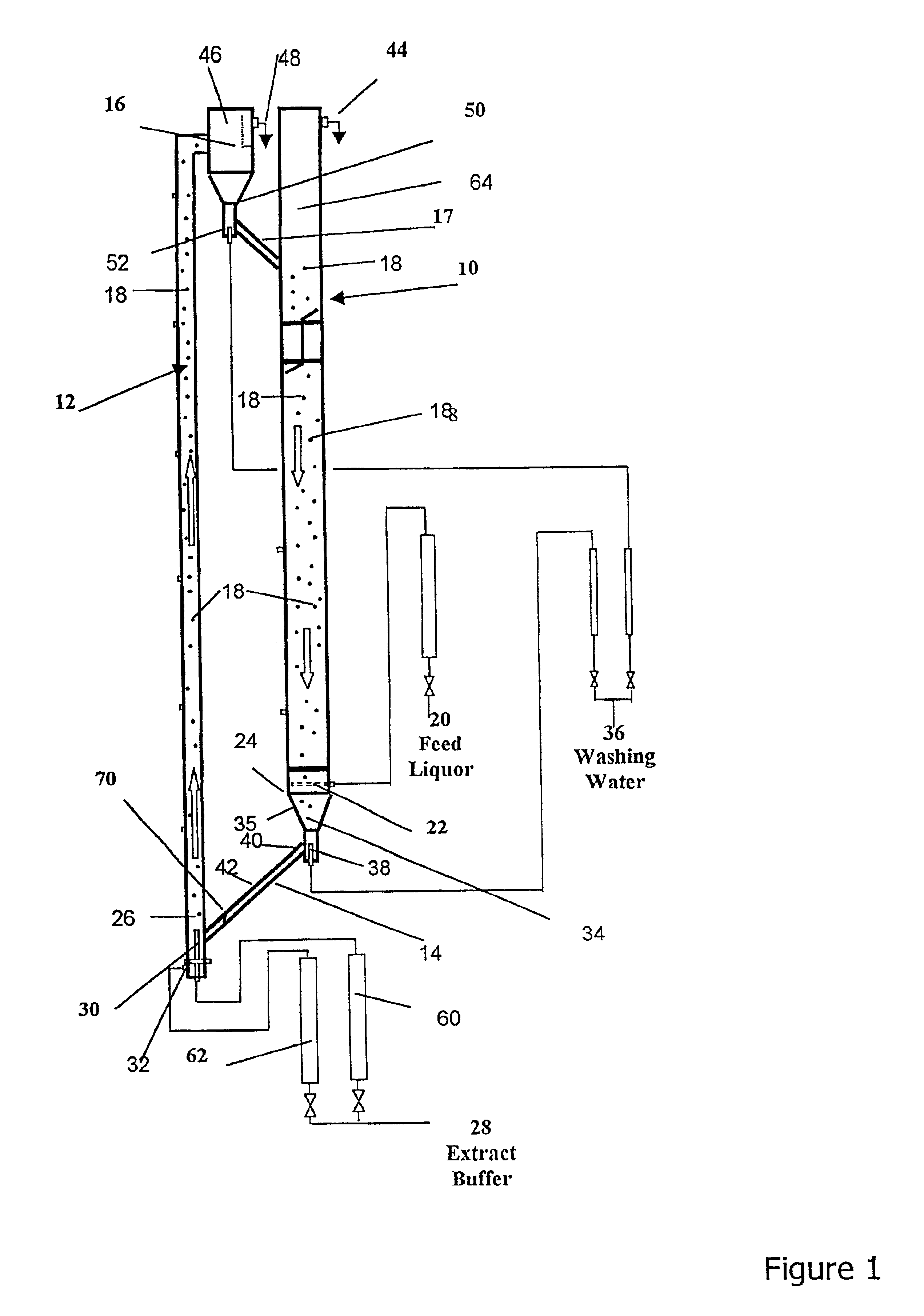Liquid-solids circulating fluidized bed
- Summary
- Abstract
- Description
- Claims
- Application Information
AI Technical Summary
Benefits of technology
Problems solved by technology
Method used
Image
Examples
Embodiment Construction
In arrangement as shown in FIG. 1, the second fluidized bed 12 is an acrylic column of I.D. 38.1 mm and 3 m in height. The distributor of the second fluidized bed 12 divides the incoming stream of extracting buffer into two substreams: the primary 60 and the auxiliary 62 streams. The primary stream 60 is introduced through a stainless steel pipe (I.D. 11 mm) (nozzle 30). It project 36 mm into the second fluidized bed column 12. Since the liquid velocity in the second fluidized bed is maintained in a range higher than the terminal velocity of the ion exchange paricles, the high liquid velocity enhances the contact efficiency and also the mass transfer rate between the liquid and the particles.
The top washing section 50 as above described comprises of the funnel bottom of the separator 46 and an acrylic pipe of 40 mm in diameter and 200 mm in height (pipe 17). The first fluidized bed is a Plexiglas column of I.D. 120 mm and 2.5 m in height. The particle entrance 17 on the first fluidi...
PUM
| Property | Measurement | Unit |
|---|---|---|
| Fraction | aaaaa | aaaaa |
| Fraction | aaaaa | aaaaa |
| Density | aaaaa | aaaaa |
Abstract
Description
Claims
Application Information
 Login to View More
Login to View More - R&D
- Intellectual Property
- Life Sciences
- Materials
- Tech Scout
- Unparalleled Data Quality
- Higher Quality Content
- 60% Fewer Hallucinations
Browse by: Latest US Patents, China's latest patents, Technical Efficacy Thesaurus, Application Domain, Technology Topic, Popular Technical Reports.
© 2025 PatSnap. All rights reserved.Legal|Privacy policy|Modern Slavery Act Transparency Statement|Sitemap|About US| Contact US: help@patsnap.com


